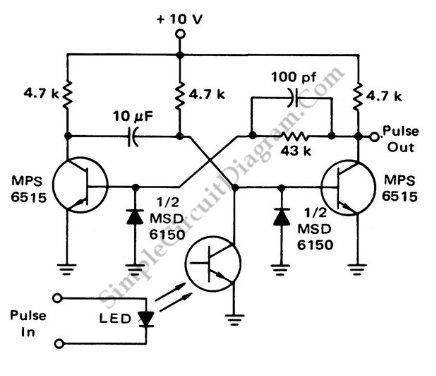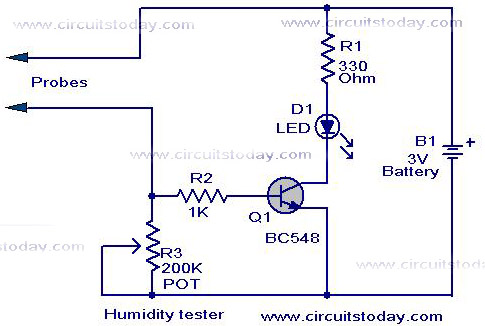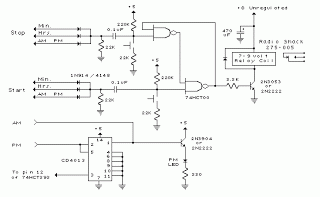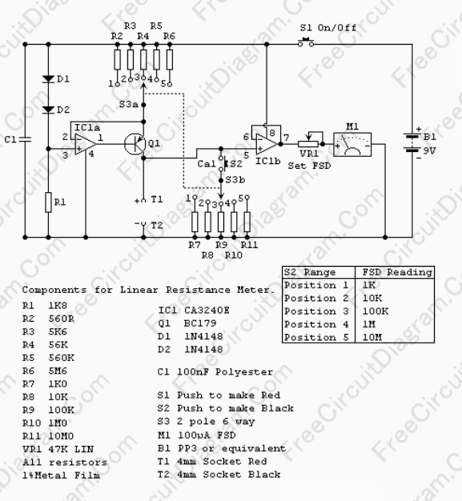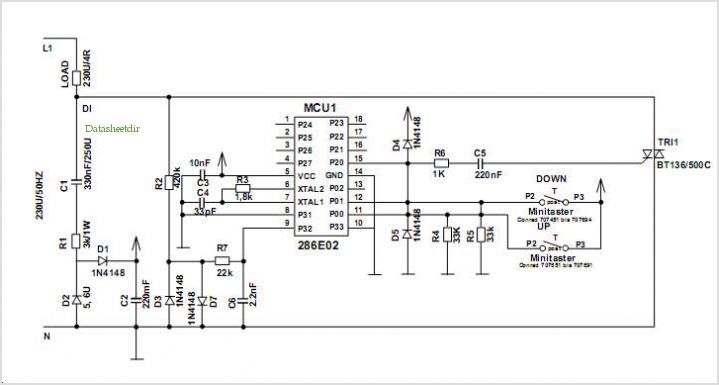
NIXIE I NIXIE clock using six ZM1030 tubes
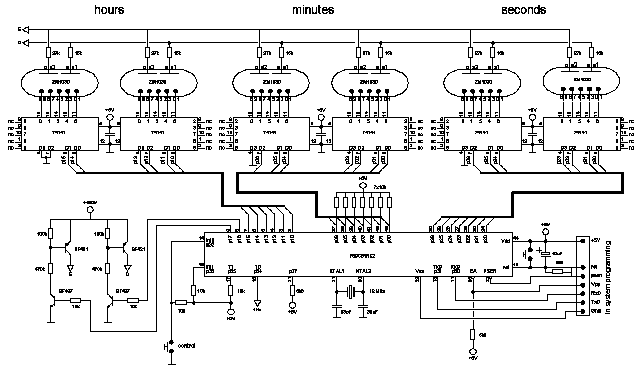
A NIXIE tube was mounted on a wooden cigar box, with the anode connected through a large series resistor to the live wire of a 220V mains supply. Touching one of the cathodes caused the numbers to glow, sparking a fascination with these glowing tubes. They represent a significant era in electronics, bridging the gap between radio tubes and digital integrated circuits (ICs). The 74141 NIXIE driver is particularly intriguing, designed to interface the 5V TTL environment with high-voltage NIXIE tubes. A magazine featured a simple NIXIE clock utilizing a mechanical clock to switch the cathodes of the tubes. Over the years, a small collection of NIXIE tubes was built, with the intention of creating a personal NIXIE clock. In 2003, an opportunity arose to acquire a large quantity of 74141 NIXIE driver ICs, but two challenges remained: the need for an appropriate housing and a lack of time due to academic commitments. Upon completing a thesis in June 2004, a group of colleagues presented a set of ZM1030 NIXIE tubes and arranged for a custom housing, making the dream of building a clock a reality. The ZM1030 and ZM1032 are unique dual-anode NIXIE tubes, designed for standard NOVAL sockets, using multiplexing to accommodate their dual anode configuration. Correctly driving these tubes is complex, as outlined in the ZM1030 datasheet.
The NIXIE tube circuit described utilizes a wooden cigar box as a housing, providing a vintage aesthetic that complements the retro technology of NIXIE tubes. The connection of the anode to the 220V mains through a series resistor is a critical design choice, ensuring that the tube operates within safe voltage limits. The series resistor is essential for current limiting, preventing damage to the tube from excessive current flow. The cathode activation method, which involves touching the cathodes, demonstrates a simple yet effective way to illuminate the digits, showcasing the tube's functionality.
The 74141 NIXIE driver IC plays a vital role in interfacing the low-voltage digital signals from modern microcontrollers or TTL logic with the high-voltage requirements of the NIXIE tubes. This driver is designed to manage the switching of the tube's cathodes, allowing for the display of numerical values. The multiplexing technique employed in the ZM1030 and ZM1032 tubes is particularly noteworthy. By utilizing two anodes—one for odd digits and the other for even digits—the design reduces the pin count necessary for operation, allowing the tubes to fit into a standard nine-pin NOVAL socket.
The construction of the NIXIE clock involves careful consideration of the driving voltages and timing sequences, as detailed in the ZM1030 datasheet. Proper voltage levels must be maintained to ensure reliable operation and longevity of the tubes. The integration of a mechanical clock mechanism to switch the cathodes highlights an innovative approach to NIXIE clock design, allowing for a tangible connection to historical technology while incorporating modern electronic components.
In summary, the project not only serves as a nostalgic homage to vintage electronics but also embodies the intersection of past and present technological advancements. The successful creation of the NIXIE clock is a testament to the enduring appeal of these glowing tubes and their place in the history of electronic displays.We mounted one of them on a wooden sigar box and connected the anode via a large series resistance to the live wire of the 220V mains! Just by touching one of the cathodes it was possible to make the numbers glow.I think that this was the beginning of my life long fascination for these misteriously glowing tubes.
They are in one word beautifull! One of the things that makes them so fascinating is that they are so visably a monument of a time when a revolution in electronics was taking place. On one hand they were obviously a product from the radio tube area, and on the other hand they were used to display the results from the children of the revolution, digital ICs.
To me, an equally fascinating component is the 74141 NIXIE driver. What a curious component it is, designed to interface the 5V TTL world with the high voltage NIXIE tubes. Of course I could not understand everything that was in them. One of these magazines contained a description of a poor man`s NIXIE clock (right picture) which used a mechanical clock to switch the cathodes of the tubes [1].
At that time I had no clue about the working of digital ICs (I was twelve), but this was something I could understand. Over the years I built up a small collection of NIXIE tubes, always having in mind that one day I would build my own NIXIE clock.
A few years ago a shared my room at work with Jacco van der Hoeven. Although Jacco is a mechanic by profession, he also likes to experiment with electronics in his spare time and therefor could understand my fascination for these glowing tubes. Somewhere in 2003 the NIXIE clock fever rose to an alarming level when I run into a bunch (50!) of old 74141 NIXIE driver ICs that were about to be thrown away together with a whole chest full of obsolete TTL ICs.
There were at the time two obstacles which prevented me from actually building a clock. The first obstacle was the housing. Making the electronic part of the clock is no problem, but making a descent box around it is for me impossible. I always end up fitting my projects into luncheon boxes or transparant cereals containers. Although I have a very understanding wife, this is unfortunately not her idea of a nice drawing room assesoiry!
The second obstacle was the lack of time. At that moment I was writing my thesis, which practically consumed all my spare time. When I finally received my PhD (2 june 2004), Jacco and Eugene Timmering organized a beautifull group present. Jacco persuaded Jim Oostveen to donate six ZM1030 NIXIE tubes he had lying around. Then they asked Henk van Aken from the mechanical workshop to make a beautifull housing to hold the tubes and the electronics that would drive them.
Henk is a man who can make anything, and the result was fantastic (top figure). Jacco and Eugene rightfully assumed that now my thesis was finished I would have plenty of spare time left to design and built the circuits for the clock. On these page you find a report on this delightfull task which made a boyhood dream come true. The ZM1030 and ZM1032 are to my knowledge the only dual anode NIXIE tubes ever made. The tubes are identical except that the ZM1030 has a red filter coating. The tubes were fabricated to fit into a standard NOVAL socket. A NOVAL socket has nine pins. A normal NIXIE tube however requires at least elleven pins (ten for the digit cathodes and one for the anode).
To make the NIXIE tube fit into a a nine pin socket, Philips used multiplexing. Instead of just a single anode, the ZM1030 contains two anodes (Fig. 1). One anode drives the odd digits, while the other anode drives the even digits. Now, although this sounds simple, correct driving of these tubes is not a trivial matter. Figure 2 summarizes the driving voltages recommended in the ZM1030 datasheet. Both the cathodes 🔗 External reference
The NIXIE tube circuit described utilizes a wooden cigar box as a housing, providing a vintage aesthetic that complements the retro technology of NIXIE tubes. The connection of the anode to the 220V mains through a series resistor is a critical design choice, ensuring that the tube operates within safe voltage limits. The series resistor is essential for current limiting, preventing damage to the tube from excessive current flow. The cathode activation method, which involves touching the cathodes, demonstrates a simple yet effective way to illuminate the digits, showcasing the tube's functionality.
The 74141 NIXIE driver IC plays a vital role in interfacing the low-voltage digital signals from modern microcontrollers or TTL logic with the high-voltage requirements of the NIXIE tubes. This driver is designed to manage the switching of the tube's cathodes, allowing for the display of numerical values. The multiplexing technique employed in the ZM1030 and ZM1032 tubes is particularly noteworthy. By utilizing two anodes—one for odd digits and the other for even digits—the design reduces the pin count necessary for operation, allowing the tubes to fit into a standard nine-pin NOVAL socket.
The construction of the NIXIE clock involves careful consideration of the driving voltages and timing sequences, as detailed in the ZM1030 datasheet. Proper voltage levels must be maintained to ensure reliable operation and longevity of the tubes. The integration of a mechanical clock mechanism to switch the cathodes highlights an innovative approach to NIXIE clock design, allowing for a tangible connection to historical technology while incorporating modern electronic components.
In summary, the project not only serves as a nostalgic homage to vintage electronics but also embodies the intersection of past and present technological advancements. The successful creation of the NIXIE clock is a testament to the enduring appeal of these glowing tubes and their place in the history of electronic displays.We mounted one of them on a wooden sigar box and connected the anode via a large series resistance to the live wire of the 220V mains! Just by touching one of the cathodes it was possible to make the numbers glow.I think that this was the beginning of my life long fascination for these misteriously glowing tubes.
They are in one word beautifull! One of the things that makes them so fascinating is that they are so visably a monument of a time when a revolution in electronics was taking place. On one hand they were obviously a product from the radio tube area, and on the other hand they were used to display the results from the children of the revolution, digital ICs.
To me, an equally fascinating component is the 74141 NIXIE driver. What a curious component it is, designed to interface the 5V TTL world with the high voltage NIXIE tubes. Of course I could not understand everything that was in them. One of these magazines contained a description of a poor man`s NIXIE clock (right picture) which used a mechanical clock to switch the cathodes of the tubes [1].
At that time I had no clue about the working of digital ICs (I was twelve), but this was something I could understand. Over the years I built up a small collection of NIXIE tubes, always having in mind that one day I would build my own NIXIE clock.
A few years ago a shared my room at work with Jacco van der Hoeven. Although Jacco is a mechanic by profession, he also likes to experiment with electronics in his spare time and therefor could understand my fascination for these glowing tubes. Somewhere in 2003 the NIXIE clock fever rose to an alarming level when I run into a bunch (50!) of old 74141 NIXIE driver ICs that were about to be thrown away together with a whole chest full of obsolete TTL ICs.
There were at the time two obstacles which prevented me from actually building a clock. The first obstacle was the housing. Making the electronic part of the clock is no problem, but making a descent box around it is for me impossible. I always end up fitting my projects into luncheon boxes or transparant cereals containers. Although I have a very understanding wife, this is unfortunately not her idea of a nice drawing room assesoiry!
The second obstacle was the lack of time. At that moment I was writing my thesis, which practically consumed all my spare time. When I finally received my PhD (2 june 2004), Jacco and Eugene Timmering organized a beautifull group present. Jacco persuaded Jim Oostveen to donate six ZM1030 NIXIE tubes he had lying around. Then they asked Henk van Aken from the mechanical workshop to make a beautifull housing to hold the tubes and the electronics that would drive them.
Henk is a man who can make anything, and the result was fantastic (top figure). Jacco and Eugene rightfully assumed that now my thesis was finished I would have plenty of spare time left to design and built the circuits for the clock. On these page you find a report on this delightfull task which made a boyhood dream come true. The ZM1030 and ZM1032 are to my knowledge the only dual anode NIXIE tubes ever made. The tubes are identical except that the ZM1030 has a red filter coating. The tubes were fabricated to fit into a standard NOVAL socket. A NOVAL socket has nine pins. A normal NIXIE tube however requires at least elleven pins (ten for the digit cathodes and one for the anode).
To make the NIXIE tube fit into a a nine pin socket, Philips used multiplexing. Instead of just a single anode, the ZM1030 contains two anodes (Fig. 1). One anode drives the odd digits, while the other anode drives the even digits. Now, although this sounds simple, correct driving of these tubes is not a trivial matter. Figure 2 summarizes the driving voltages recommended in the ZM1030 datasheet. Both the cathodes 🔗 External reference
Warning: include(partials/cookie-banner.php): Failed to open stream: Permission denied in /var/www/html/nextgr/view-circuit.php on line 713
Warning: include(): Failed opening 'partials/cookie-banner.php' for inclusion (include_path='.:/usr/share/php') in /var/www/html/nextgr/view-circuit.php on line 713
